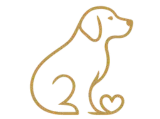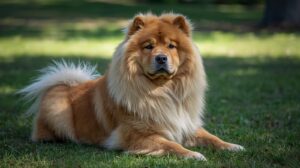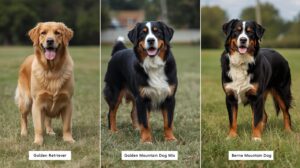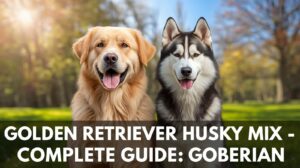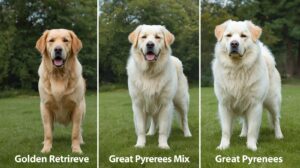Golden Retriever Cross Labrador: Goldador Your Ultimate Guide
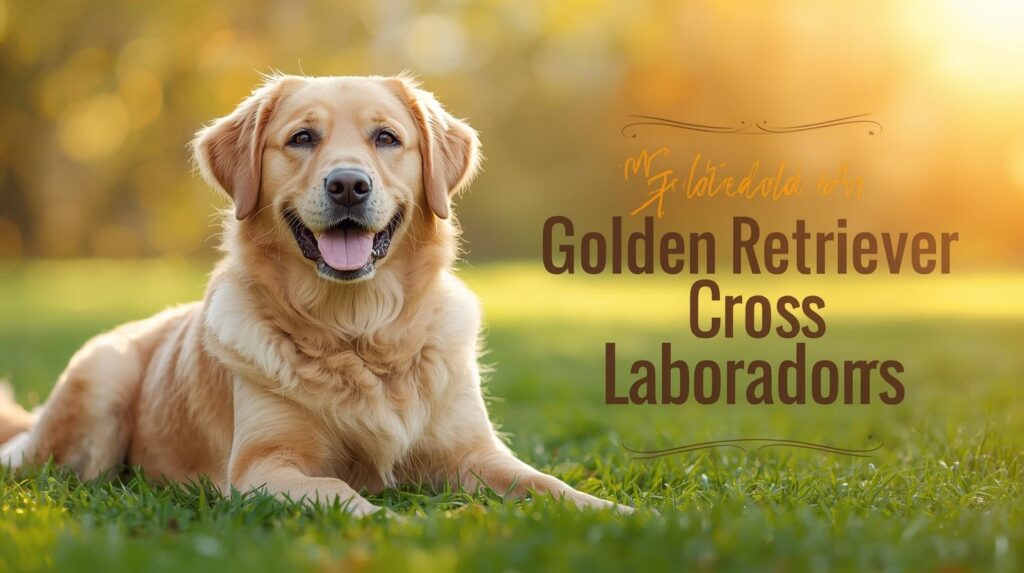
When I first met Charlie, a golden retriever cross labrador at my local dog park, I was instantly captivated by his gentle nature and infectious enthusiasm. His owner told me he was the perfect family companion, and after researching this remarkable hybrid, I understood why. The golden retriever cross labrador, affectionately known as the Goldador, represents one of the most successful designer dog breeds in modern canine history.
What Makes the Golden Retriever Cross Labrador Special?
The golden retriever cross labrador combines two of America’s most beloved dog breeds into one extraordinary companion. This crossbreed merges the Golden Retriever’s heartwarming charm with the Labrador Retriever’s unwavering loyalty, creating a dog that excels in both family settings and professional roles. The Labrador Retriever ranked second most popular in 2024, while Golden Retrievers secured the third position, demonstrating the enduring appeal of both parent breeds.
This Labrador cross golden retriever isn’t just another mixed breed. According to the Guide Dogs for the Blind Association, the Goldador is their most successful guide dog among all breeds in their programme. This achievement speaks volumes about the golden retriever labrador mix’s intelligence, trainability, and temperament.
When you bring a golden retriever cross labrador into your life, you’re welcoming a dog that inherits the best traits from both lineages. These dogs possess an innate eagerness to please, making them incredibly responsive to training. Their friendly disposition means they typically welcome strangers with wagging tails rather than suspicion, which is why they rarely make effective guard dogs but excel as therapy and assistance animals.
Physical Characteristics and Appearance Standards
Understanding what your golden retriever cross labrador will look like requires examining both parent breeds. Full-grown Goldadors typically weigh between 60 to 80 pounds and stand approximately 22 to 24 inches tall, making them medium to large-sized dogs that command presence without being overwhelming.
Size and Build Comparison
| Characteristic | Golden Retriever Cross Labrador | Golden Retriever | Labrador Retriever |
|---|---|---|---|
| Weight Range | 60–80 lbs | 55–75 lbs | 55–80 lbs |
| Height Range | 22–24 inches | 21.5–24 inches | 21.5–24.5 inches |
| Build Type | Athletic, sturdy | Balanced, graceful | Muscular, strong |
| Coat Texture | Dense, water-resistant | Long, flowing | Short, dense |
The Labrador cross golden retriever features a dense, water-resistant coat that serves them well in various weather conditions. Coat colors and textures can vary even among puppies from the same litter, meaning your golden retriever cross labrador might have a shorter coat resembling the Labrador parent or a longer, fluffier coat inherited from the Golden Retriever side.
Most Goldadors display coat colors ranging from light cream to deep golden, though some may inherit the Labrador’s chocolate or black coloring. Their eyes typically radiate warmth with shades of brown, and their ears hang close to their heads in classic retriever fashion. The golden retriever labrador mix usually maintains the broad head and strong jaw characteristic of both parent breeds, giving them an approachable yet distinguished appearance.
Temperament and Personality Traits That Shine
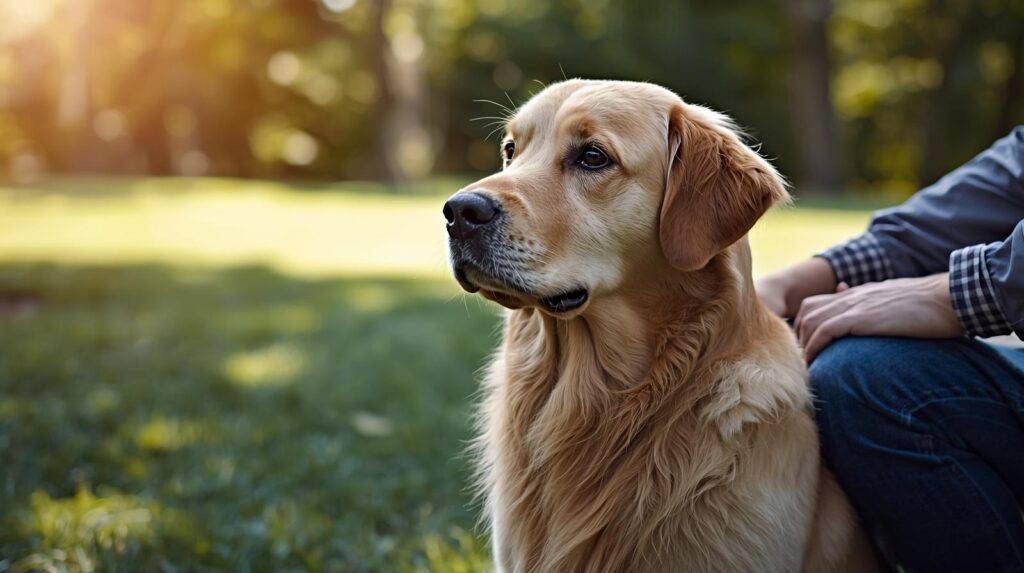
Goldadors are renowned for their intelligence, trainability, and eagerness to please, making them highly responsive to obedience training. This golden retriever cross labrador doesn’t just want to be near you they genuinely want to make you happy, which creates an incredibly rewarding training experience.
Sociable, loving, and intelligent are the main attributes of the Goldador. Their easygoing nature transforms them into ideal household pets who adapt seamlessly to family dynamics. Whether you have toddlers learning to crawl or teenagers with active social lives, a Labrador cross golden retriever typically adjusts their energy to match the household’s rhythm.
From personal observation, I’ve noticed that the golden retriever cross labrador possesses an almost uncanny ability to read human emotions. When you’re having a tough day, they seem to know instinctively, offering quiet companionship without being demanding. Conversely, when it’s playtime, their enthusiasm becomes boundless. This emotional intelligence makes them exceptional therapy dogs and emotional support animals.
Goldadors form strong bonds with their families but don’t become overly excited when meeting strangers, which represents a perfect balance for most households. They’re friendly without being overwhelming, affectionate without being clingy, and playful without being destructive when properly trained and exercised.
Health Profile and Lifespan Expectations
The golden retriever labrador mix generally enjoys good health, though prospective owners should understand potential health considerations. Goldadors have a lifespan of 10 to 12 years and may be susceptible to hip dysplasia, elbow dysplasia, and potential eye conditions including progressive retinal atrophy.
Common Health Concerns
Understanding these health factors helps you provide preventative care for your golden retriever cross labrador:
Joint Issues: Both parent breeds are prone to hip and elbow dysplasia, making joint health a priority. Regular exercise without excessive strain during puppyhood, maintaining healthy weight, and considering joint supplements can help mitigate these risks.
Eye Conditions: Progressive retinal atrophy and cataracts can affect the Labrador cross golden retriever. Annual eye examinations by a veterinary ophthalmologist can catch these conditions early, potentially preserving vision longer.
Weight Management: The golden retriever cross labrador inherits both parent breeds’ love of food, making obesity a real concern. These dogs will eat whatever you offer and then look at you with those pleading eyes for more. Strict portion control and regular exercise are non-negotiable for maintaining their health.
Ear Infections: Those adorable floppy ears can trap moisture and debris, creating an environment where bacteria thrive. Regular ear cleaning, especially after swimming or bathing, helps prevent infections.
A Goldador’s life expectancy generally ranges between 10 to 15 years, with lifespan varying depending on size, genetics, diet, exercise, and overall health care. Regular veterinary check-ups, balanced nutrition, and an active lifestyle significantly contribute to helping your golden retriever labrador mix live their longest, healthiest life.
Training Your Golden Retriever Cross Labrador Successfully
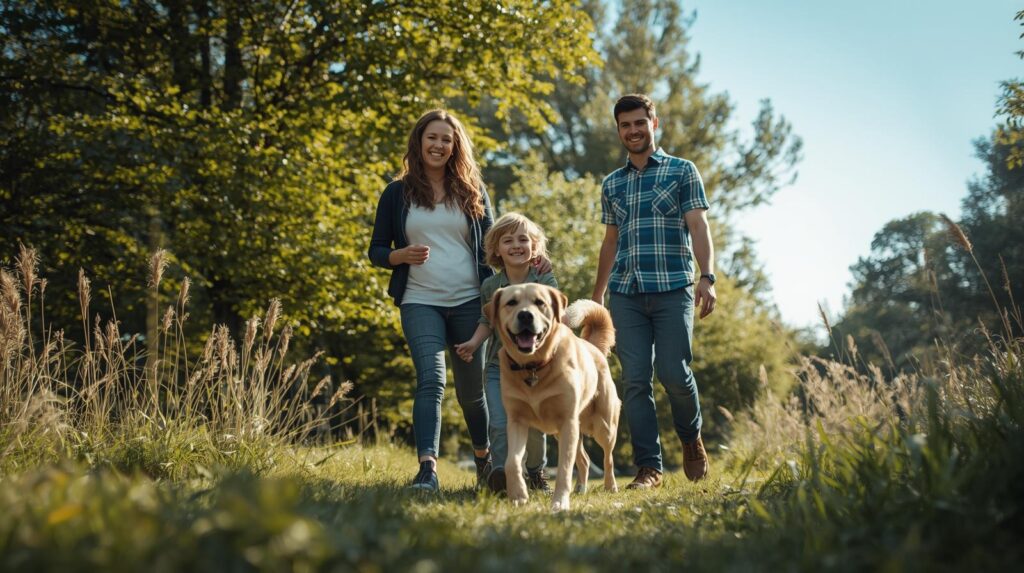
Training a golden retriever cross labrador ranks among the most rewarding experiences in dog ownership. Their intelligence and desire to please create ideal conditions for learning, whether you’re teaching basic obedience or advanced skills.
Start socialization early with your Labrador cross golden retriever puppy. Expose them to different people, animals, environments, and experiences during their critical socialization period (roughly 3 to 14 weeks old). This foundation prevents fear-based behaviors and helps develop the confident, friendly temperament Goldadors are known for.
Positive reinforcement works exceptionally well with the golden retriever cross labrador. These dogs thrive on praise, treats, and play rewards. Harsh corrections or punishment-based training methods aren’t just unnecessary they can damage the trusting relationship that makes training this breed so effective.
For more comprehensive guidance on training techniques specifically designed for retrievers, check out our Golden retriever guides for expert tips and step-by-step instructions.
Essential Training Milestones
Puppy Phase (8-16 weeks): Focus on house training, basic commands (sit, stay, come), and bite inhibition. Your golden retriever labrador mix puppy will be eager to learn but easily distracted, so keep training sessions short about 5 to 10 minutes.
Adolescent Phase (4-12 months): Continue reinforcing basic obedience while introducing more complex commands. The golden retriever cross labrador may test boundaries during this phase, so consistency becomes crucial. This is also the perfect time to start leash training for proper walking behavior.
Adult Phase (1+ years): Your Labrador cross golden retriever is now ready for advanced training, whether that’s agility courses, advanced obedience, or specialized tasks like therapy dog certification.
Exercise Requirements and Activity Needs Daily
A golden retriever cross labrador requires substantial daily exercise to maintain physical health and mental well-being. These dogs need plenty of attention and exercise alongside a high-quality diet to thrive. Underexercising a Goldador often leads to destructive behaviors as they find their own entertainment.
Plan for at least 60 to 90 minutes of vigorous exercise daily for your golden retriever labrador mix. This doesn’t mean casual walks around the block these active dogs need activities that challenge them physically and mentally. Swimming ranks among the best exercises for the Labrador cross golden retriever, as both parent breeds were developed as water retrievers. The low-impact nature protects joints while providing excellent cardiovascular conditioning.
Interactive games transform exercise into bonding time with your golden retriever cross labrador. Fetch remains a perennial favorite, tapping into their natural retrieval instincts. Hide-and-seek games, puzzle toys, and scent work provide mental stimulation that’s equally important as physical activity.
Consider dog sports as outlets for your Goldador’s energy and intelligence. Agility training, dock diving, flyball, and obedience competitions give the golden retriever cross labrador structured challenges that satisfy their working-dog heritage. Many owners find that their dogs seem happiest when they have a “job” to do, even if that job is just retrieving the newspaper each morning.
Nutrition and Feeding Guidelines for Optimal Health
Feeding your golden retriever cross labrador properly impacts every aspect of their health, from coat quality to joint function to longevity. These dogs require high-quality nutrition that supports their active lifestyle without promoting excessive weight gain.
Choose dog food formulated for large breeds, as these contain appropriate calcium and phosphorus ratios that support healthy skeletal development in the golden retriever labrador mix. During puppyhood, this becomes particularly important large breed puppy formulas help prevent rapid growth that can exacerbate joint problems.
Adult Goldadors typically consume 3 to 4 cups of high-quality dry food daily, divided into two meals. However, individual needs vary based on activity level, age, metabolism, and body condition. A Labrador cross golden retriever working as a service dog will require more calories than one living a more sedentary lifestyle.
The golden retriever cross labrador inherited both parent breeds’ tendency toward food motivation, which makes training easier but weight management more challenging. These dogs rarely regulate their own food intake, eating whatever’s available and then hoping for more. Measure portions carefully, limit treats to no more than 10 percent of daily calories, and avoid free-feeding.
Grooming Needs Throughout the Seasons
Grooming requirements for your golden retriever cross labrador depend largely on which parent’s coat they inherit. Dogs with longer, Golden Retriever-type coats require more intensive grooming than those with shorter, Lab-style coats, but all Goldadors shed considerably, particularly during seasonal transitions.
Brush your golden retriever labrador mix at least three times weekly using a slicker brush and undercoat rake. During spring and fall shedding seasons, daily brushing helps manage the impressive amount of fur they release. This regular grooming doesn’t just reduce household hair it distributes skin oils, removes dead hair, and provides an opportunity to check for skin issues, lumps, or parasites.
Bathe your Labrador cross golden retriever every 6 to 8 weeks or when they become dirty or smelly. Over-bathing strips natural oils from their coat, potentially causing dry skin and dullness. Use a dog-specific shampoo, and thoroughly rinse all product from their dense coat residual shampoo can cause irritation.
Pay special attention to your golden retriever cross labrador’s ears, checking and cleaning them weekly. Their floppy ears create a warm, moist environment where yeast and bacteria thrive. Use a veterinarian-recommended ear cleaner and cotton balls to gently clean visible portions of the ear canal.
Living Arrangements and Space Requirements
The golden retriever cross labrador adapts to various living situations, though they perform best with adequate space for movement and play. While these dogs can adjust to apartment living, it requires dedicated commitment to providing sufficient exercise and mental stimulation outside the home.
Ideally, the Labrador cross golden retriever thrives in a home with a securely fenced yard where they can run, play, and explore safely. However, a yard doesn’t replace quality time and structured exercise it supplements it. Many golden retriever labrador mix owners mistakenly believe a backyard alone provides adequate exercise, but these social dogs want to be active with their people, not alone in the yard.
Indoor space matters too. The golden retriever cross labrador isn’t suited for outdoor-only living. These deeply social dogs form strong bonds with their families and suffer psychologically when isolated from household activity. They should live indoors with their family, participating in daily life rather than being relegated to a backyard kennel.
Cost Considerations When Owning This Breed
Understanding the financial commitment helps you prepare adequately for your golden retriever cross labrador. Initial costs include the purchase or adoption fee, typically ranging from $500 to $2,000 depending on source and lineage. Responsible breeders who health-test parent dogs and provide early socialization charge more, but this investment often pays dividends through healthier puppies.
First-year expenses for a Labrador cross golden retriever often exceed $3,000 when including spaying/neutering, initial vaccinations, training classes, supplies, and routine veterinary care. Subsequent years typically cost $1,500 to $2,500 annually for food, routine veterinary care, preventative medications, grooming supplies, and miscellaneous expenses.
Budget for potential health issues that affect the golden retriever cross labrador. Emergency veterinary care, treatment for genetic conditions like hip dysplasia, or managing chronic conditions can cost thousands of dollars. Pet insurance or a dedicated savings account helps manage unexpected expenses without compromising your dog’s care.
According to recent pet ownership statistics, dog owners spend an average of $1,480 annually on routine care, though large, active breeds like the golden retriever labrador mix often exceed this amount. High-quality food alone can cost $600 to $1,000 yearly for dogs in this size range.
Finding a Reputable Breeder or Rescue
Acquiring your golden retriever cross labrador from responsible sources ensures you’re supporting ethical breeding practices and getting a healthy, well-adjusted puppy. Reputable breeders health-test both parent dogs for hip dysplasia, elbow dysplasia, eye conditions, and heart issues, providing documentation of these clearances.
Visit breeders in person before committing to a Labrador cross golden retriever puppy. Observe the living conditions, meet at least one parent dog, and ask extensive questions about health testing, socialization practices, and the breeder’s involvement with breed clubs or organizations. Quality breeders interview potential buyers as thoroughly as you should interview them they want to ensure their puppies go to appropriate homes.
Rescue organizations and shelters often have golden retriever vs labrador dogs needing homes. Adult Goldadors in rescue settings may already have basic training and might better suit adopters who want to skip the demanding puppy phase. Organizations specializing in Golden Retriever or Labrador Retriever rescue often work with Goldadors as well.
Conclusion
The golden retriever cross labrador represents an exceptional choice for families, active individuals, and anyone seeking a loyal, intelligent, and affectionate companion. These dogs bring together the finest qualities of two beloved breeds, creating a versatile dog that excels in various roles from family pet to working dog. Their trainability, friendly disposition, and adaptable nature make the Labrador cross golden retriever suitable for many lifestyles, provided you can meet their exercise and companionship needs.
Success with a golden retriever labrador mix requires commitment to training, exercise, healthcare, and most importantly, time spent together. These social dogs don’t thrive as backyard pets or in situations where they’re frequently alone. When given proper attention, training, and care, the golden retriever cross labrador becomes more than just a pet they become an integral family member who enriches daily life with unwavering devotion and joyful enthusiasm.
Whether you’re drawn to the Goldador for their assistance dog capabilities, their gentle nature with children, or simply their winning personality, this crossbreed delivers on its promises. The investment of time, money, and energy required pales in comparison to the rewards these remarkable dogs provide throughout their lives.
Frequently Asked Questions
Is a golden retriever cross labrador good with children and other pets?
Yes, the golden retriever cross labrador typically excels with children and other pets when properly socialized. Their patient, gentle nature combined with high tolerance for chaos makes them excellent family dogs. However, their size and enthusiasm mean they might accidentally knock over small children during play, so supervision with toddlers remains important.
How much does a golden retriever cross labrador shed?
The Labrador cross golden retriever sheds considerably year-round, with heavy seasonal shedding during spring and fall. Regular brushing (at least three times weekly) helps manage loose hair, though you should expect to find dog hair on furniture, clothing, and floors. This isn’t a good choice for people with dog allergies or those who can’t tolerate shedding.
Can a golden retriever cross labrador live in an apartment?
While possible, apartment living with a golden retriever labrador mix demands significant commitment to providing daily exercise outside the home. These energetic dogs need at least 60 to 90 minutes of vigorous activity daily. If you can meet these needs through park visits, walks, swimming, and play sessions, apartment living can work, but a home with a yard is preferable.
What’s the difference between F1 and F1B golden retriever cross labrador?
F1 Goldadors have one Golden Retriever parent and one Labrador parent (50/50 split). F1B Goldadors result from breeding an F1 Goldador back to either parent breed (75/25 split). F1B generations might show more predictable traits from whichever parent breed they’re backcrossed to, but individual variation still occurs within any generation.
Are you ready to welcome the unconditional love and boundless energy of a golden retriever cross labrador into your home?
